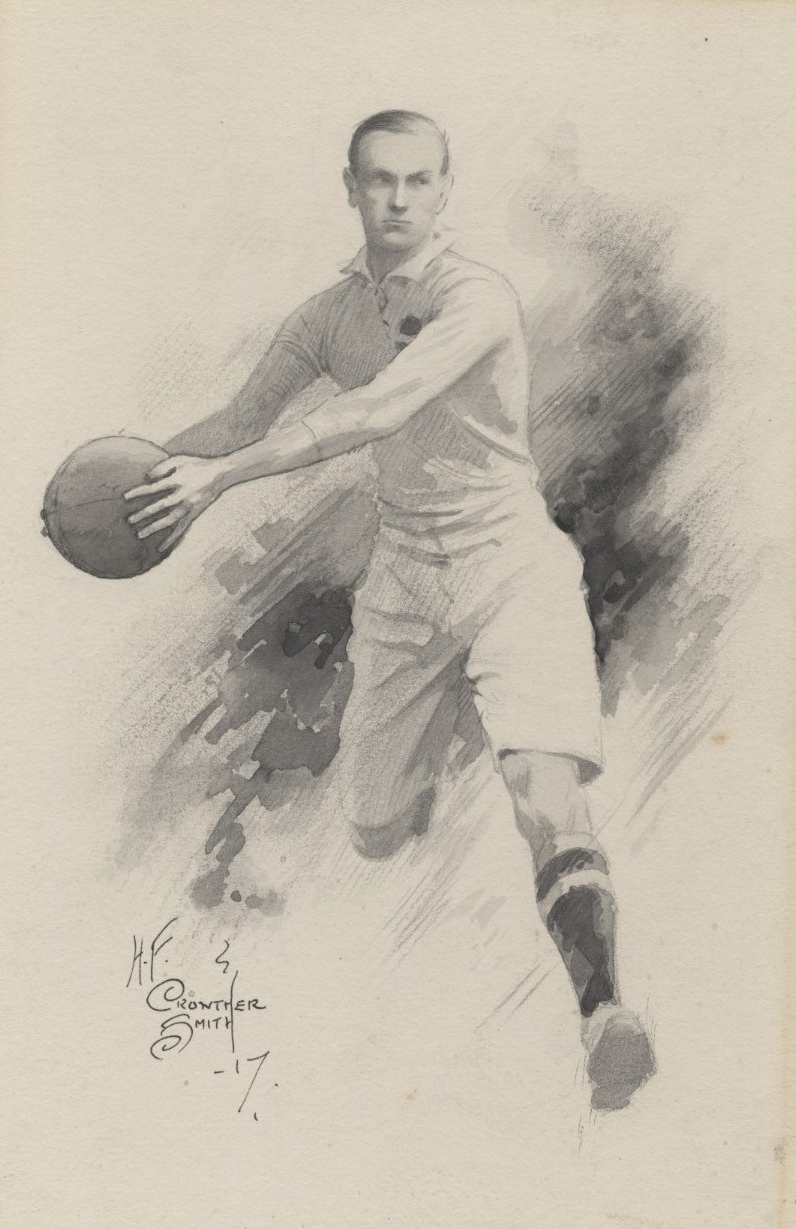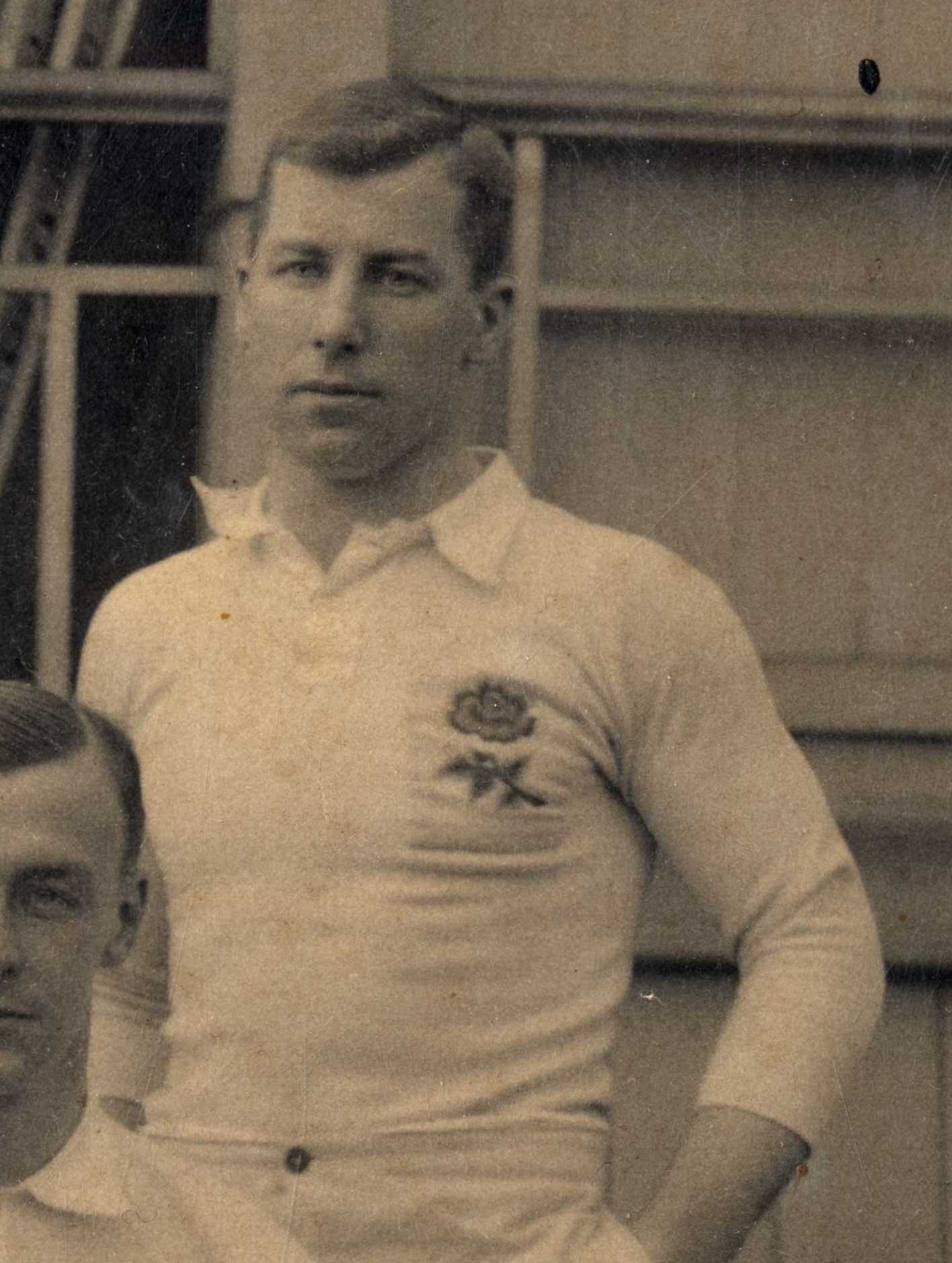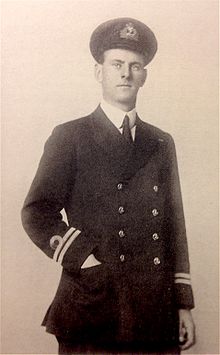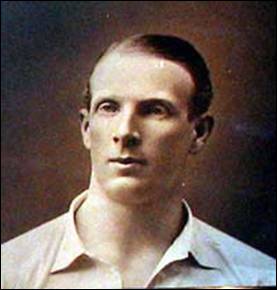
18 January 2026

World Rugby Museum Curator, Phil McGowan, remembers the rugby players that served in the First World War…
When Britain declared war on Germany on 4th August 1914 one sport above all others stood out due to the immediacy of its response. Such was the example set by rugby union footballers that the war office produced a poster advising other sportsmen to follow their 'glorious example' by enlisting with the armed forces. When the Rugby Football Union convened a month later they discussed the idea of forming a Rugby Football Corps but concluded that it was too late since all of their members were already inside barracks. Between 1914 and 1918 rugby footballers served in almost every British campaign. Over the course of the commemorative period 2014-2018 I have had the privilege to research and write about those that served, some who fell and others who returned. Here follows a selection of those men.

British involvement in the Great War began in earnest at the Battle of Mons. Lieutenant George Dobbs had travelled with the first wave of the British Expeditionary Force (BEF) to France in August 1914. Though Irish-born, Dobbs had represented England in the 1906 Home Nations Championship, before enlisting with the Royal Engineers. Outnumbered two-to-one the British held the line of the Mons-Conde Canal until nightfall on 23rd August. Overnight however news came through that the French had fared less well. General Lanzerac had instructed his men to retreat, leaving the BEF at risk of encirclement. With the British flank about to be exposed Commander French ordered his men to fall back.

George Dobbs
The following day the BEF withdrew, leaving a handful of manned gun emplacements along the canal, with orders to repel the Germans. Lieutenant Dobbs remained at his post, relaying messages for long enough to ensure the safe withdrawal of both the British and French forces. For this, the first English rugby international to see action on the western front became the first to be decorated. Dobbs was awarded the French Legion d'Honneur for his part in the withdrawal. Though Dobbs survived Mons he would lose his life in 1917 to the artillery exchanges that preceded the Third Battle of Ypres (Passchendaele). He is buried at Lijssenthoek Cemetery. The first international rugby player to lose their life in 1914 was Frenchman Alfred Mayssonnié. In 1908 he had become Toulouse' first international player and went on to feature in the French side's first competitive outing in the Five Nations Championship, against Wales in 1910. In 1912 he helped Toulouse to their first French Championship. In 1914 he joined the French war effort as an adjudant with the 67th Infantry Division, which became engaged in the Battle of the Marne and the defence of Paris. Maysso was killed in action on the second day of the battle near to Verdun whereupon his Stade Toulouse teammate and club captain, Paul Mounicq, carried his body to a safe place for burial. Three days later a small group of Toulousain returned to give Maysso a proper burial. He was buried facing Toulouse and his townsmen made a red and black tie, his team colours, out of the red tobacco purse and black notebooks that they carried in their pockets.

Ronald Francis Simson
On 14th September 1914 Scotland's Ronald Francis Simson became the first home-nations international rugby player to be killed in action during the Great War. Born in Edinburgh, Simson was a tall running centre who played with distinction for London Scottish, the Army and the United Services. In 1911 he earned his international call-up, scoring a try against England on his debut. As a professional soldier, he was amongst the first to set sail for France in 1914. A lieutenant with the Royal Field Artillery, he was killed by shell-fire during the First Battle of the Aisne. He was aged 24. During the course of the War Scotland would lose a total of 31 international players, including five captains, more than any other country involved in the conflict. By 1915 the war had become static and the pattern for trench warfare established. In May 1915 England lost one of the finest rugby players she had ever produced.
Ronald William Poulton (later unofficially known as Poulton Palmer) was born in Headington, Oxford, one of five children of pro-Darwinian Professor, Sir Edward Bagnall Poulton and his wife Emily.

Ronnie Poulton
Poulton is often described as having had a 'swerving running style', when in his own words, he ran straight and trusted his swinging arms and hips to ensure that opponents would swerve out of his way. Either way he made waves as a young rugby player and entertained all who saw him play. He was first selected for England in 1909 at the age of 19. Later that year he scored a record five tries in the Varsity Match for Oxford University, before featuring for Harlequins in the first game to be played at Twickenham. A protégé of Adrian Stoop he then helped his club captain secure England's first outright championship victory for eighteen years. By 1913 he had developed into one of the most dangerous outside centres in world rugby and was a stand-out performer in a campaign that delivered England her first Grand Slam. 1914 however was to be Poulton's season. Now captain, he put in three straight man-of-the-match performances to deliver England a Triple Crown. In his final game he contributed four of England's nine tries against France to secure a second consecutive Grand Slam. Later that year Poulton enlisted with the Royal Berkshire Regiment. He did not hesitate to enlist but privately regretted that civilized nations had embraced the folly of war. In his letters home he expressed his dissatisfaction that peaceful solutions had been neither tested nor embraced. He was shot and killed by sniper-fire in a trench south of Ypres at the age of 25 on 15th May 1915. Amongst his last words a lament that he 'would never play at Twickenham again'. There were of course many who served and returned. One of the most unlikely was perhaps Engineer Lieutenant Sydney Coopper who was sunk on board HMS Sparrowhawk during the Battle of Jutland in 1916. Born in Hoo in 1878, Coopper entered the Royal Naval Engineering College at Keyham before turning out for Blackheath, the Barbarians and Devon. He was first selected for England on the wing, against Wales in 1900. In 1902 he scored against Ireland. He didn't feature again for England until 1905 but scored his second international try that year in the final minute of the game against Ireland at Mardyke in Cork.

Sydney Coopper
Having survived the scuttling of his ship, Coopper remained with the Royal Navy until 1924. In October of that year he accepted the position of Secretary with the Rugby Football Union and remained in post at Twickenham for over 20 years. His retirement was postponed with the outbreak of war in 1939 and it fell on Coopper to keep the home fires burning at HQ until 1947. He passed away in 1961 at the age of 82. Many others were less fortunate at Jutland. Amidst the Battlecruiser Fleet was HMS Indefatigable whose Torpedo Officer was Lieutenant Commander John Skinner Wilson. As a player Wilson was a combative forward with the United Services and Navy (1908, 1913) and had been twice capped for Scotland in 1909. On board the Battlecruiser Fleet flagship HMS Lion was England's 1914 Grand Slam winning forward Lieutenant Commander Arthur Leyland Harrison.

Arthur Harrison
In the mouth of the Skagerrak it was the Germans that opened fire first and drew first blood. Lion received nine hits and only the quick thinking of a mortally wounded major, who flooded the ship's magazines before they could explode, kept the ship from sinking. Indefatigable was less fortunate and received five direct hits which ignited her magazine and sent her to the bottom of the sea with a loss of 1017 lives from a crew of 1019. Lieutenant Wilson was amongst the victims. After catching sight of the main German Fleet the remainder of the British Battlecruiser Fleet turned and fled north to where the British Grand Fleet lay in wait, ready to turn the tables on the unsuspecting enemy. At the head of the Grand Fleet was a flotilla of armoured cruisers that included HMS Defence. On board Defence was Gunnery Officer Cecil Halliday Abercrombie.

Cecil Abercrombie
Abercrombie had attended the same HMS Britannia Naval Training School as Wilson and had followed his progress on the rugby field. An energetic, fast and physical player he had been first selected for Scotland in 1910 and scored a try in Paris the following year. He remained in the squad and earned the last of his six caps against Wales in 1913. Before the main body of the Grand Fleet could engage the enemy Defence had moved in on the stricken SS Wiesbaden. In so doing she opened herself up to attack from five superior German ships. The doomed cruiser received multiple hits and was sunk with a loss of all but ten of the ships 903 man complement. Despite her sinking she continued to fire on the German ships in defiance and several eye witness accounts claim that it was Abercrombie's turret that remained active right up until the point she slipped beneath the waves. Lion and Lieutenant Commander Harrison survived Jutland and in 1918 Harrison volunteered to take part in the Zeebrugge Raid. Displaying 'indomitable resolution and courage of the highest order' he was awarded a posthumous Victoria Cross for his part in the action but he did not return. Of the many mechanical innovations that developed in parallel with the Great War the bi-plane was undoubtedly the most graceful. By 1914 Cyril Lowe had already established himself as one of England's greatest finishers, having scored a record eight tries in the 1914 season alone. He served with the Royal Flying Service Corps as a pilot in a reconnaissance plane but was shot down in 1916 and again in 1917, when he managed to land his plane despite having been shot through the shoulder. Undeterred by his experiences Lowe retrained as single-seater pilot and returned to the front as a captain with 24 Squadron in April of 1918. Now a fighter pilot, Lowe wasted no time in accumulating multiple kills, including a couple of Albatrosses akin to the one that had shot him down the previous year. In June Captain Lowe was awarded the Distinguished Flying Cross with the following citation:
'This officer has destroyed five enemy planes and driven down two others out of control. On one occasion he attacked two enemy triplanes, although at the time only one of his guns was serviceable; he shot down one of the machines in flames. On another occasion, while leading a formation of eight scouts he engaged a hostile formation of 26 machines. Having shot down a Fokker biplane he went to the assistance of one of our scouts and drove the enemy machine down to 500 feet; at this low altitude half of a blade of his propeller was shot off by fire from the ground.'
At the end of the War Lowe was re-selected for his country. He picked up exactly where he had left-off six years earlier. Two Grand Slams were secured in 1921 and 1923 before Lowe retired having amassed 25 consecutive caps and a record eighteen tries. 60 years later Cyril Lowe passed away at the age of 91 with his try-scoring record still intact.

Edgar Mobbs
When the guns finally fell silent and the great process of demobilisation began, those that were left reflected on what they had lost. In Northampton a statue was built in memory of the town's finest son. Lieutenant Colonel Edgar Mobbs had initially been refused commission in 1914 on account of his age. He returned to the recruitment office at the head of a self-raised battalion of 264 men. Over the next three years he would rise from Private to Lieutenant Colonel and was engaged in almost every major action on the western front. Wounded at Loos, Arras and the Somme, Mobbs was finally killed whilst engaged in a grenade assault on a German machine gun emplacement on the first day of the Third Battle of Ypres (Passchendaele). Mobbs had been one of many who had used rugby as a training exercise for his men. In 1919, in recognition of the sport's role in the conflict, an Inter-Services and Dominions Rugby Championship was held featuring sides from Great Britain, France, Canada, South Africa, New Zealand and Australia. Now known as the 'King's Cup' it can be considered the very first 'Rugby World Cup'. Back in Northampton the 'Mobbs Memorial Match' was instigated and continues to this day. As rugby resumed in the aftermath of war former teammates reflected on what had been lost. Bob Oakes, secretary of the Yorkshire RFU described matters thus:
'…history unparalleled…which will never be surpassed…history which will be held sacred by every Rugby lover for all time'.
Phil McGowan is the Curator at the World Rugby Museum, Twickenham. This article includes adapted extracts from his book 'Doing Their Duty: How England's Rugby Footballers Helped Win the First World War'. It is available to buy here amzn.to/2Lul12k